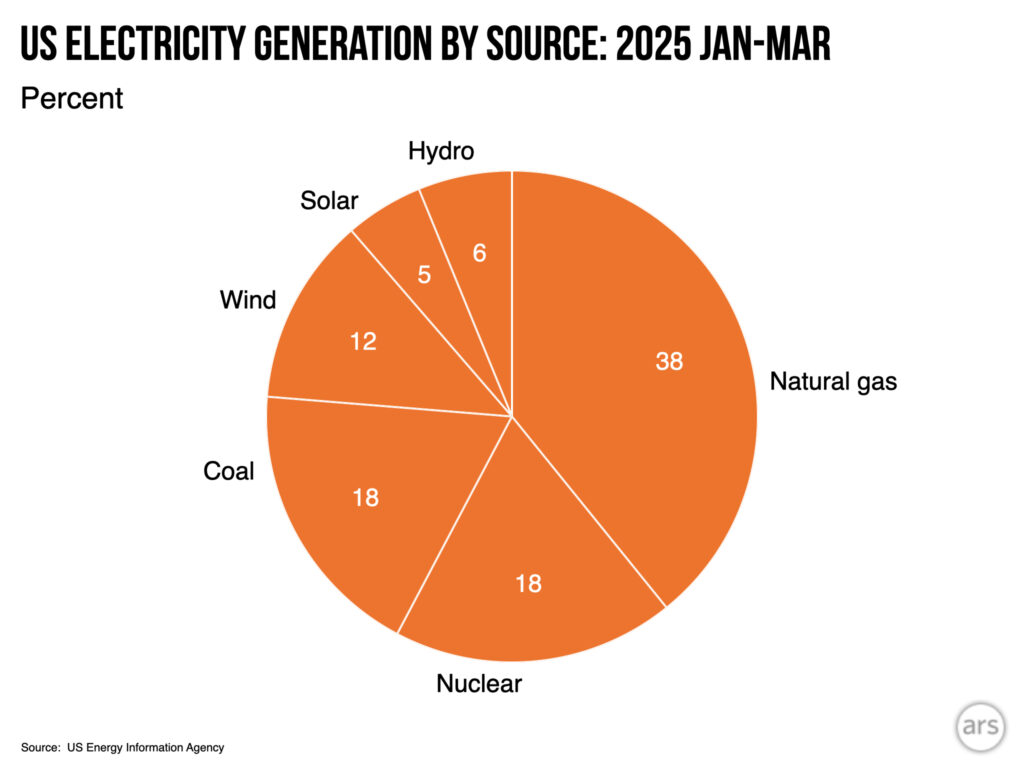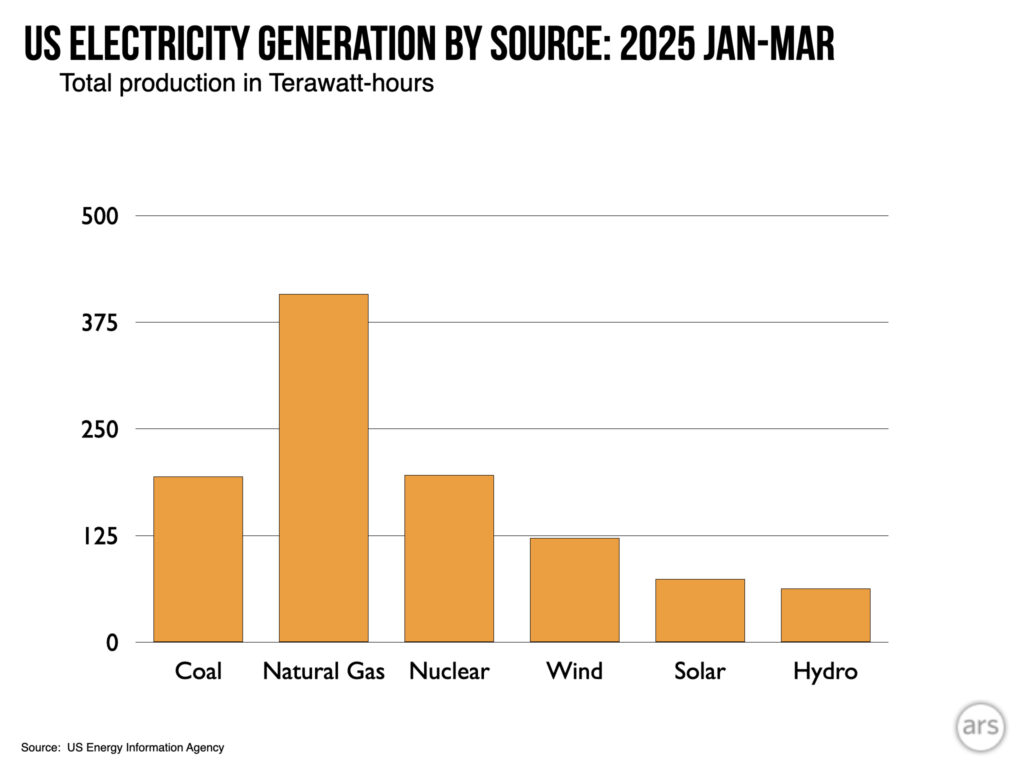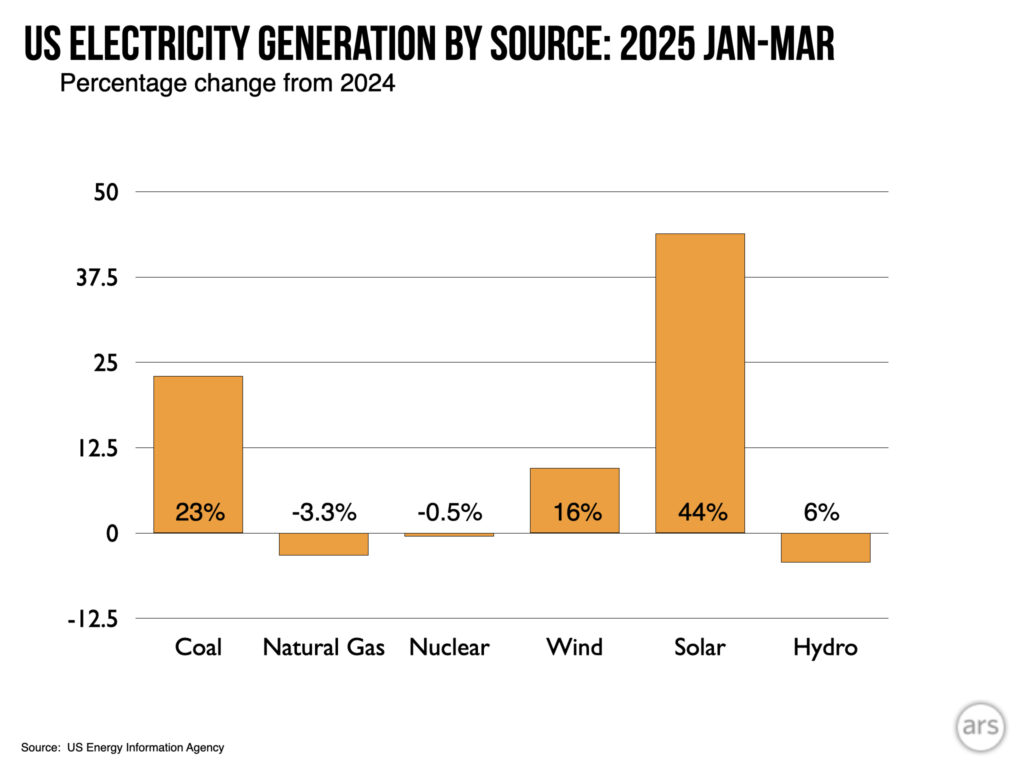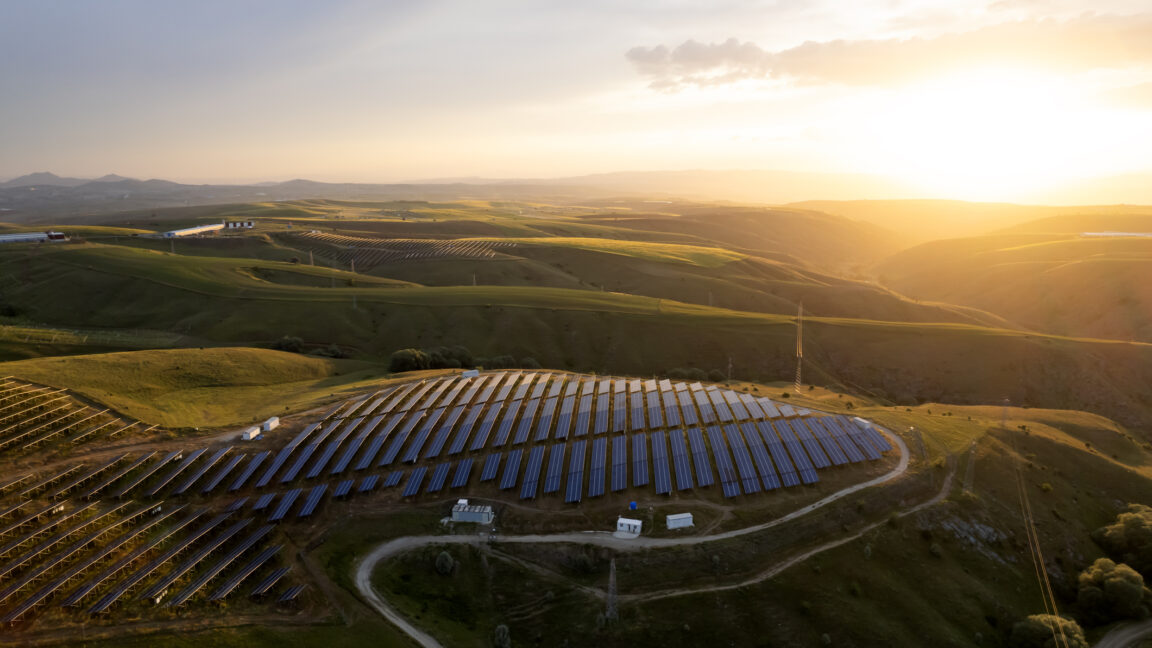Continued rising demand still outpacing growth of renewables in the US.
In the US, many newly constructed generating facilities are brought online at the end of the year to qualify for tax incentives. Since much of the US's new generating capacity is solar power, that has led to a boom in solar production to start the year in recent years. With the first three months of data in for 2025, it's clear this year is no exception: Solar power is up a staggering 44 percent compared to the prior year.
That's the good news. The bad news is that, in contrast to China, solar's growth hasn't been enough to offset rising demand. Instead, the US also saw significant growth in coal use, which rose by 23 percent compared to the year prior, after years of steady decline.
Short-term fluctuations in demand are normal, generally driven by weather-induced demand for heating or cooling. Despite those changes, demand for electricity in the US has been largely flat for over a decade, largely thanks to gains in efficiency. But 2024 saw demand go up by nearly three percent, and the first quarter of 2025 saw another rise, this time of nearly five percent. It's a bit too early to say that we're seeing a shift to a period of rising demand, but one has been predicted for some time due to rising data center use and the increased electrification of transportation and appliances.

Ideally, we'd be in a place where the increased demand is offset by growth in non-polluting sources of power like wind and solar. Unfortunately, we're short of that at the moment. The first three months of 2025 saw production from wind increase by 12 percent while production from solar grew by 44 percent, compared to the same quarter last year. In absolute terms, wind and solar combined to produce an additional 28 Terawatt-hours in 2025 compared to the same time the year before. Unfortunately, demand rose by nearly 50 TW-hr over the same period.
Under those circumstances, the rest of the difference will be made up for with fossil fuels. Running counter to recent trends, the use of natural gas dropped during the first three months of 2025. This means that the use of coal rose nearly as quickly as demand, up by 23 percent compared to the same time period in 2024.
Despite the rise in coal use, the fraction of carbon-free electricity held steady year-over-year, with wind/solar/hydro/nuclear accounting for 43 percent of all power put on the US grid. That occurred despite small drops in nuclear and hydro production.


Solar power also passed a key milestone in 2025, although it requires digging through the statistics to realize it. In terms of power on the grid, there was less solar than hydro. But the Energy Information Agency also estimates the production from small-scale solar, like the kind you'd find on people's roofs. Some of this never enters the grid and instead simply offsets demand locally (in that it gets used by the house that sits beneath the panels). If you combine the TW-hr produced by small- and grid-scale solar, however, they surpass the production from hydropower by a significant margin.
This surge in solar comes on top of a 30 percent increase in production the year prior. The growth curve is clearly not slowing down.
That dynamic is also not likely to change immediately in response to cuts to tax breaks for renewable power that were part of the budget package passed by the House of Representatives on Thursday, and not only because it's possible that some Republican Senators might object to budget changes that will harm their states. Solar power in most areas is now cheaper than alternatives, even without subsidies, and any power plant (renewable or otherwise) will likely see its costs rise due to the tariff environment. Finally, the tax breaks don't expire immediately, and most power plant construction requires significant advanced planning.
All of those factors should continue the solar boom for at least a couple more years before all of the expected changes apply the brakes.
Hope you enjoyed this news post.
Thank you for appreciating my time and effort posting news every day for many years.
News posts... 2023: 5,800+ | 2024: 5,700+ | 2025 (till end of April): 1,811
RIP Matrix | Farewell my friend ![]()



3175x175(CURRENT).thumb.jpg.b05acc060982b36f5891ba728e6d953c.jpg)
Recommended Comments
There are no comments to display.
Join the conversation
You can post now and register later. If you have an account, sign in now to post with your account.
Note: Your post will require moderator approval before it will be visible.